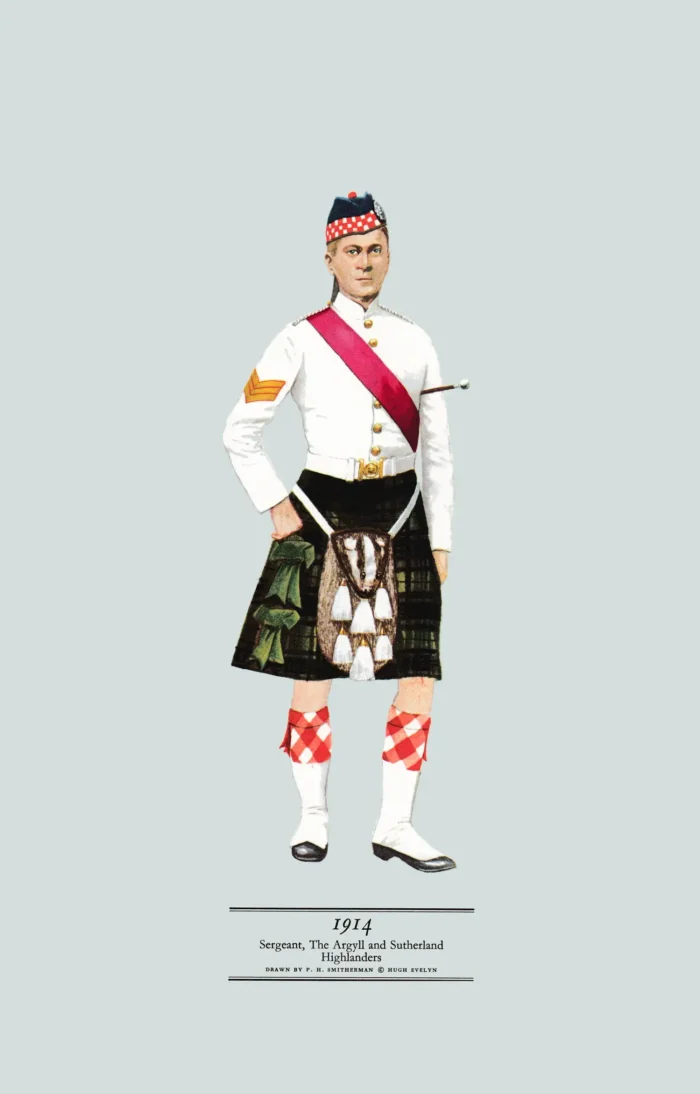Sergeant, The Argyll and Sutherland Highlanders, 1914
£12.00
Raised 1794; from1881 Argyll and Sutherland Highlanders; from 2006 Royal Regiment of Scotland – 5 SCOTS (scroll down for a more detailed Description)
Published 1963 by © Hugh Evelyn Limited; drawn by Colonel Philip Henry Smitherman (1910-1982), Royal Corps of Signals
Size: c. 24.5 x 37.5 cm [9 ½ ″ x 14 ½ ″] (may vary slightly from printers’ cut 50 years ago)
Printed on on medium cardstock weighing 144 g/sm2 faced in light greyish blue (RGB c. d5dede)
Print is STANDARD size – shipping is the same for 1 to 10 prints (based on largest print size in your order) – see Shipping & Returns
In stock
Description
In 1881 Princess Louise’s (Sutherland and Argyll Highlanders) was created from amalgamation of the 91st (Argyllshire Highlanders) Foot and 93rd (Sutherland Highlanders) Foot. The Argylls had a long and honourable history, first raised in 1794 by the Duke of Argyll as the 98th, later the 91st Regiment. A second battalion was raised in 1800 as the 93rd, from the old Sutherland Fencibles, formed in 1779 by the Countess of Sutherland. On 28 March 2006, as part of the restructuring of the infantry, the regiment were amalgamated with the other Scottish infantry regiments into the 5th Battalion, Royal Regiment of Scotland ‘5 SCOTS’. In 2012 (Argyll and Sutherland Highlanders) were reduced to a single company (Balaklava Company) for public (ceremonial) duties in Scotland. At Balaclava the regiment withstood unaided, and routed, the Russian cavalry, earning the nickname, carried to this day, of the ‘Thin Red Line‘. This sergeant wears the dress used in Highland regiments before 1914 for walking out and general duties in barracks. The white jacket is the descendant of the sleeved white waistcoat worn by the officers and men of most regiments before 1800 and used by the men as a fatigue dress. Officers instead used either a similar red jacket, the frock coat or the short blue frock. The sergeant’s sporran is unique with the top made of a badger’s head, and was worn by the officers and sergeants of the regiment for 150 years. The Glengarry cap is a development of the original Highland bonnet. In this form it was worn widely in the army. The scarlet and white border to this cap is peculiar to the regiment, the usual pattern being scarlet and white diced with green. The kilt is of the usual Government tartan, fastened with green rosettes, a distinction of the officers and sergeants of this regiment.
Additional information
| Weight | 0.0123 kg |
|---|---|
| Dimensions | 23 × 37 cm |





